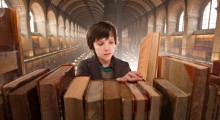depth of field
-
Watch: How to Highlight Depth of Field

As a two dimensional medium, film employs a handful of techniques to convey a greater depth of field than what exists in a given frame. In this handy video, cinematographer Matthew Rosen breaks down his five favorite ways to highlight depth, through lighting, focus, perspective, parallax, and occlusion. The dolly effect, which Rosen argues is perhaps most effective in relating depth of field to an audience, is in fact a combination of parallax and occlusion.
by Sarah Salovaara on Dec 4, 2014 -
Is Shallow Depth-of-Field a Fad?

Most creative arts suffer from trends. Someone does something new or unusual, and suddenly dozens of others are imitating it; just look at Hollywood. Since the arrival of the Canon 5D Mark II, shallow depth-of-field has become almost a fetish. There’s certainly valid reasons to want to have shallow depth-of-field, as filmmaker Stu Maschwitz wrote on his blog: “With a 5D Mark II, its sensor double the size of a motion picture film frame, we can achieve cinematic focus at F4. We can get fetishistically shallow depth of field at F2.8. At F1.2, we can create abstract art in a […]
by Michael Murie on Dec 8, 2011
